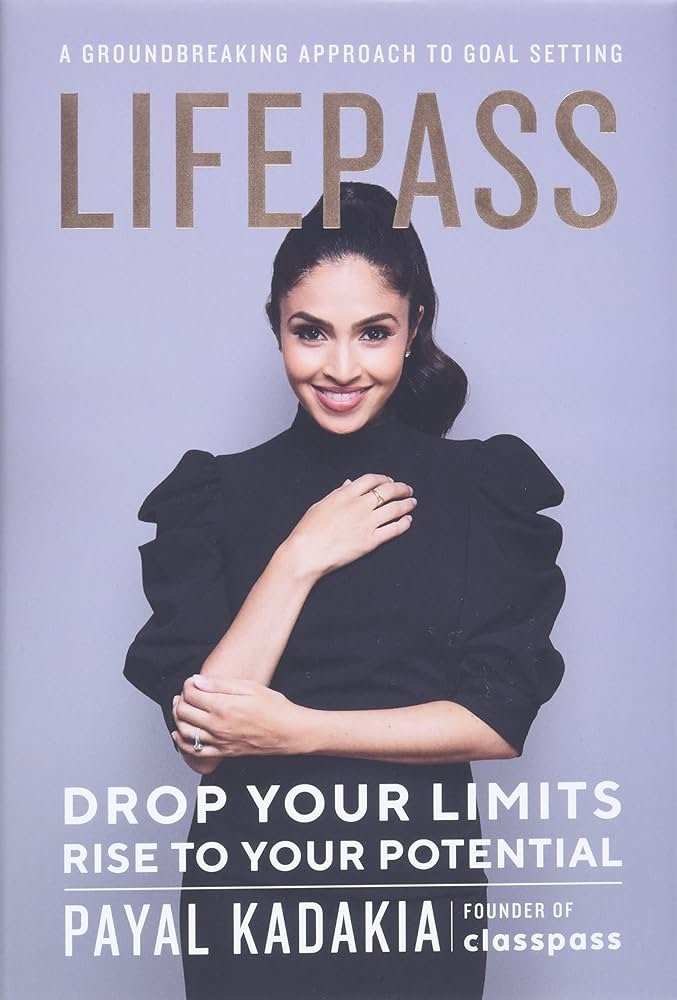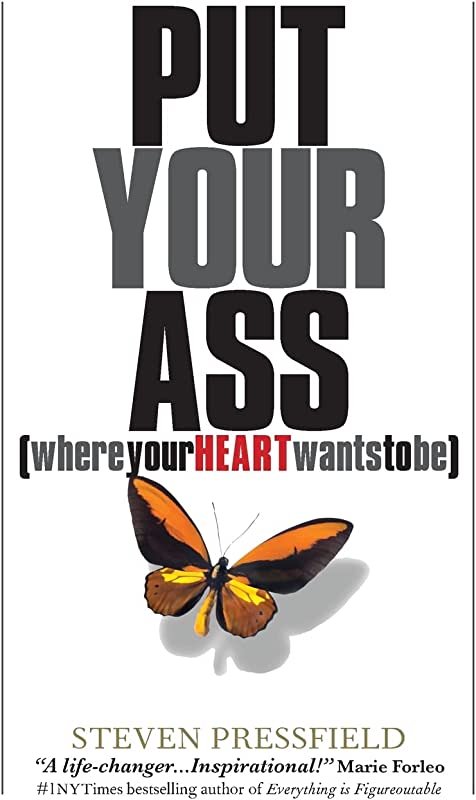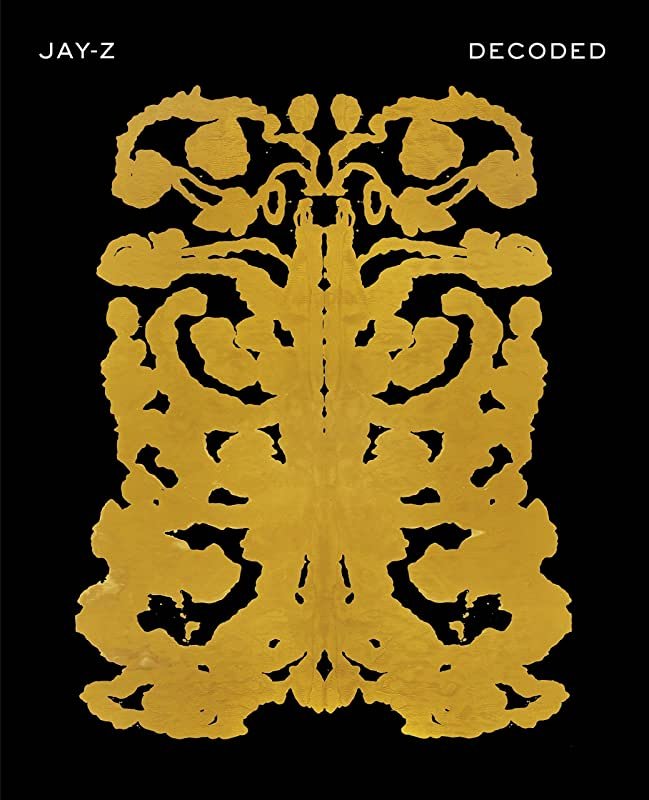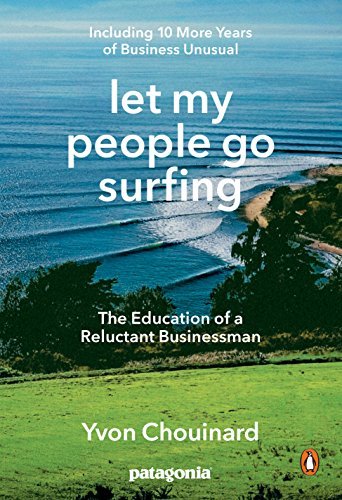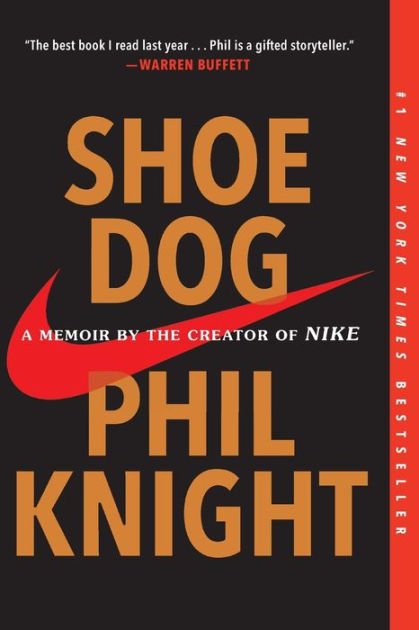Let My People Go Surfing: The Education of a Reluctant Businessman – by Yvon Chouinard
Date read: 1/10/23. Recommendation: 10/10.
A wonderful autobiography that details Chouinard’s early days as a climber and the origins of Patagonia. Most of the content in the book was originally intended to act as a philosophical manual for employees of Patagonia. But Chouinard makes this captivating for any reader through stories that explore his own life lessons, the trials of building an enduring company, and the trap of short-sighted decisions. The book contains powerful insights on simplicity, disrupting yourself, communicating with customers, seeking inspiration from unlikely sources, and the lifelong search for your guiding principle.
See my notes below or Amazon for details and reviews.
My Notes:
Chouinard Equipment:
Origins: “In 1957 I went to a junkyard and bought a used coal-fired forge, a 138-pound anvil, and some tongs and hammers and started teaching myself blacksmithing. I wanted to make my own climbing hardware, since we were starting to climb the big walls in Yosemite on multiday ascents that required hundreds of piton placements.”
At the time all climbing gear was European and the pitons used were soft iron—meant to be hammered in once and left in position (and if you tried to take these pitons out and reuse them, they would often break). The prevailing European attitude was to conquer the mountain and leave all gear in place to make it easier for the next person to reach the summit. American climbers modeled themselves after transcendental writers like Emerson, Thoreau, and Muir, and believed in leaving no trace.
Chouinard made his first pitons from an old chrome-molybdenum steel blade. They were stiffer and stronger, which made them easier to drive into cracks in Yosemite, and they could be taken out and reused.
“I made these Lost Arrow pitons for myself and the few friends I climbed with; then friends of friends wanted some. I could forge only two of my chrome-molybdenum steel pitons in an hour, and I started selling them for $1.50 each. You could buy European pitons for twenty cents, but you had to have my new gear if you wanted to do the state-of-the-art climbs that we were doing.”
In 1964, Chouinard put out his first catalog—“a one-page mimeographed list of items and prices, with a blunt disclaimer on the bottom saying not to expect fast delivery during the months of May to November.”
As demand grew, “We redesigned and improved just about every climbing tool, making each one stronger, lighter, simpler, and more functional.”
Quality as a top priority: With climbing tools, it is a matter of life and death, and they were often the heaviest users of their own products.
Despite the volume of sales doubling year over year, Chouinard Equipment showed only about a 1 percent profit at the end of the year because they were constantly coming up with new designs. By 1970 they were the largest supplier of climbing hardware in the U.S.
Simplicity:
“In anything at all, perfection is finally attained not when there is no longer anything to add, but when there is no longer anything to take away…” Antoine de Saint-Exupéry
“Good design is as little design as possible.” Dieter Rams
“An illustrator becomes an artist when he or she can convey the same emotion with fewer brushstrokes.”
“I believe the way toward mastery of any endeavor is to work toward simplicity; replace complex technology with knowledge. The more you know, the less you need.”
Disrupt yourself:
By the 1970s, the popularity of climbing had skyrocketed. Particularly on well-known routes in primary climbing areas like El Dorado Canyon near Boulder, the Shawangunks in New York, and Yosemite Valley. On these routes, the repeating hammering of hard steel pitons during placement and removal in the same cracks was beginning to severely disfigure the rock. “After an ascent of the Nose route on El Capitan, which had been pristine a few summers earlier, I came home disgusted with the degradation I had seen. Frost and I decided we would phase out of the piton business. This was the first big environmental step we were to take over the year. Pitons were the mainstay of our business, but we were destroying the very rocks we loved.”
Chouinard started looking into aluminum chocks that could be wedged by hand rather than hammered in and out, designed his own versions called Stoppers and Hexentrics, and piloted them in small quantities until they appeared in the Chouinard Equipment catalog in 1972. “The catalog opened with ‘A word…,’ an editorial from the owners on the environmental hazards of pitons and a fourteen-page essay on clean climbing and how to use chocks by Sierra climber Doug Robinson.
“Within a few months of the catalog’s mailing, the piton business had atrophied; chocks sold faster than they could be made. In the tin buildings of Chouinard Equipment, the steady pounding rhythm of the drop hammer gave way to the high-pitched, searing whine of the multiple drill jig.”
Underwear: Wearing quick-drying insulation layers (e.g. pile jackets) over cotton underwear defeated the purpose of outer shells. In 1980 they tested making underwear out of polypropylene, a synthetic fiber that absorbs no water. It was originally intended to manufacture industrial commodities like marine ropes which float. Then it started being used in the lining of disposable diapers for its wicking ability to keep babies dry by carrying moisture away from the skin and transferring it to more absorbent outer layers in the diaper. “Using the capabilities of this new underwear as the basis of a system, we became the first company to reach the outdoor community, through essays in our catalog, the concept of layering. This approach involves wearing an inner layer against the skin for moisture transport, a middle layer of pile for insulation, and then an outer shell layer for wind and moisture protection.”
But polypropylene had a very low melting temperature. Customers who went to commercial laundromats (much hotter dryers than home) would melt their underwear. When Chouinard was at 1984 sporting goods show in Chicago watching a demonstration of polyester football jerseys being cleaned of grass stains. He realized that the material in combination with the etched jersey worked to wick away moisture. Polyester also had a much higher melting temperature. They then introduced their Capilene polyester underwear. Sales soared.
Know your shit: “Some people think we’re a successful company because we’re willing to take risks, but I’d say that’s only partly true. What they don’t realize is that we do our homework. A few years back when we switched midstream from polypropylene to Capilene for our underwear fabric, we had done our fabric development, we had done our testing in the fabric lab. We made tops and bottoms with half the garment Capilene and half polypropylene and extensively tested them in the field. We knew the market, and we were absolutely confident that it was the right thing to do.”
Other companies started introducing rip-offs and had to scramble to keep up. They repeated the same move in the early 1980s when they realized how bland all outdoor products were (tan, forest green, gray). So they drenched the Patagonia line in color (cobalt, teal, French red, mango, sea foam)
By disrupting themselves, they set the tone for the entire market. Whereas if they had focused on competitors instead, they would have been locked in a reactive state rather than forging ahead with bold decisions and new ideas.
Switching to organic cotton: “After several trips to the San Joaquin Valley, where we could smell the selenium ponds and see the lunar landscape of cotton fields, we asked a critical question: How could we continue to make products that laid waste to the earth in this way? In the fall of 1994, we made the decision to take our cotton sportswear 100 percent organic by 1996. We had eighteen months to make the switch for sixty-six products, and less than a year to line up the fabric.”
Seek inspiration from unlikely places:
Chouinard’s first idea for clothing: “In the late sixties, after crag climbing in the Peak District in England, I stopped by an old Lancashire mill that contained the last machine left in the world that still made a tough, superheavy corduroy cloth…Back then, before denim, workmen’s pants used to be made of corduroy because its tufted wales protected the woven backing from abrasion and cuts. I thought this durable cloth would be great for climbing. Ordering up some fabric, I had some knickers and double-seated shorts made. They sold well to our climbing friends, so I ordered some more.”
Rugby shirts: In the late sixties, men didn’t wear bright clothes. Active sportswear was often a gray sweatshirt and pants. On a winter climbing trip to Scotland in 1970, Chouinard bought a regulation rugby shirt to wear, thinking it would be good for climbing since it was built to withstand scrums in rugby and had a collar to keep hardware slings from cutting into his neck. The basic color was blue with two red and one yellow center stripe across the chest. When he returned home his friends started asking about it so he ordered some from Umbro and sold out immediately. They couldn’t keep them in stock.
Pile sweaters becoming an outdoor staple: “At a time when the entire mountaineering community relied on the traditional, moisture-absorbing layers of cotton, wool, and down, we looked elsewhere for inspiration—and protection. We decided that a staple of North Atlantic fisherman, the synthetic pile sweater, would make an ideal mountain sweater because it insulated well without absorbing moisture…We sewed a few seaters and field-tested them in alpine conditions. The polyester fabric was astonishingly warm, particularly when used with a shell. It insulated well but also dried in minutes, and it reduced the number of layers a climber had to wear.”
Entrepreneurship:
“If you want to understand the entrepreneur, study the juvenile delinquent. The delinquent is saying with his actions, ‘This sucks. I’m going to do my own thing.’”
“A master in the art of living draws no sharp distinction between his work and his play; his labor and his leisure; his mind and his body; his education and his recreation. He hardly knows which is which. He simply pursues his vision of excellence through whatever he is doing, and leaves others to determine whether he is working or playing. To himself, he always appears to be doing both.” L.P. Jacks
Generalist:
“I’ve always thought of myself as an 80 percenter. I like to throw myself passionately into a sport or activity until I reach about an 80 percent proficiency level. To go beyond that requires an obsession and degree of specialization that doesn’t appeal to me. Once I reach that 80 percent level I like to go off and do something totally different; that probably explains the diversity of the Patagonia product line—and why our versatile, multifaceted clothes are the most successful.”
Search for guiding principle:
During a period of extreme growth when scale was shaking the company, Chouinard sought advice from Dr. Michael Kami who had run strategic planning for IBM and had turned Harley-Davidson around.
“Before he could help us, he said, he wanted to know why we were in business. I told him the history of the company and how I considered myself a craftsman who had just happened to grow a successful business…We told him about our tithing program, how we had given away a million dollars just in the past year to more than two hundred organizations, and that our bottom-line reason for staying in business was to make money we could give away. Dr. Kami thought for a while and then said, ‘I think that’s bullshit. If you’re really serious about giving money away, you’d sell the company for a hundred million or so, keep a couple million for yourselves, and put the rest in a foundation. That way you could invest the principal and give away six or eight million dollars every year…So maybe you’re kidding yourself about why you’re in business.’”
Stick with what you know: “The sooner a company tries to be what it is not, the sooner it tries to ‘have it all,’ and the sooner it will die.”
As a recession hit the company had to reset, they were growing at an unsustainable pace. They redefined their values and mission statement. And while managers solved for the sales and cash-flow issues, Chouinard led weeklong employee seminars on the company’s revitalized philosophy. The goal was to teach every employee their business and environmental ethics and values.
Teaching the classes to his employees on Patagonia’s philosophies finally gave Chouinard his answer to Dr. Kami’s question. “I knew, after thirty-five years, why I was in business. True, I wanted to give money to environmental causes. But even more, I wanted to create in Patagonia a model other businesses could look to in their own searches for environmental stewardship and sustainability, just as our pitons and ice axes were models for other equipment manufacturers…I realized how much Patagonia as a business was driven by its high-quality standards and classic design principles. The products we made, each feature of every shirt, jacket, or pair of pants, had to be necessary.”
“The history of Patagonia from the crisis of 1991-92 to the present day doesn’t make for such interesting reading, fortunately…The story is really about how we are trying to live up to our mission statement: ‘Make the best product, cause no unnecessary harm, and use business to inspire and implement solutions to the environmental crisis.’”
“We never wanted to be a big company. We want to be the best company, and it’s easier to try to be the best small company than the best big company.”
Make the best product:
“Having high-quality, useful products anchors our business in the real world and allows us to expand our mission. Because we have a history of making the best climbing tools in the world, tools that your life is dependent on, we are not satisfied making second-best clothing.”
Product design principles: Functional, multifunctional, durable, repairable, simple. “As individual consumers, the single best thing we can do for the planet is to keep our stuff in use longer.”
Non-obvious application of Occam’s Razor and simplification to establish fewer points of failure: “The best-performing firms make a narrow range of products very well. The best firms’ products also use up to 50 percent fewer parts than those made by their less successful rivals. Fewer parts means a faster, simpler (and usually cheaper) manufacturing process. Fewer parts means less to go wrong: quality comes built in.”
“When I’m working on a problem, I never think about beauty. I think only how to solve the problem. But when I have finished, if the solution is not beautiful, I know it is wrong.” Richard Buckminster Fuller
Communicating with customers:
“Since the publication of the 1972 Chouinard Equipment catalog that contained the ‘Clean Climbing’ essay, we have seen that the primary purpose of our catalogs is to serve as a vehicle to communicate with our customers—whether it is by trying to change climbing philosophy, by rallying them to register and vote for the environment…or just by relating stories.”
The ‘Clean Climbing’ essay not only encouraged climbers to climb clean but was also the first piece ever written about how to use the new chocks. “As a result, Chouinard Equipment’s piton business dried up, and its chock business exploded, nearly overnight. To show its impact, far beyond a business tool, that catalog was reviewed as a mountaineering book in the American Alpine Journal.”
“Just as Patagonia makes products for a deeper, less distracted experience of the world and its wild places, our image has to convey refuge from, and offer an alternative to, a virtual world of fast-moving, mind-skimming (and numbing) pictures and sound.”

